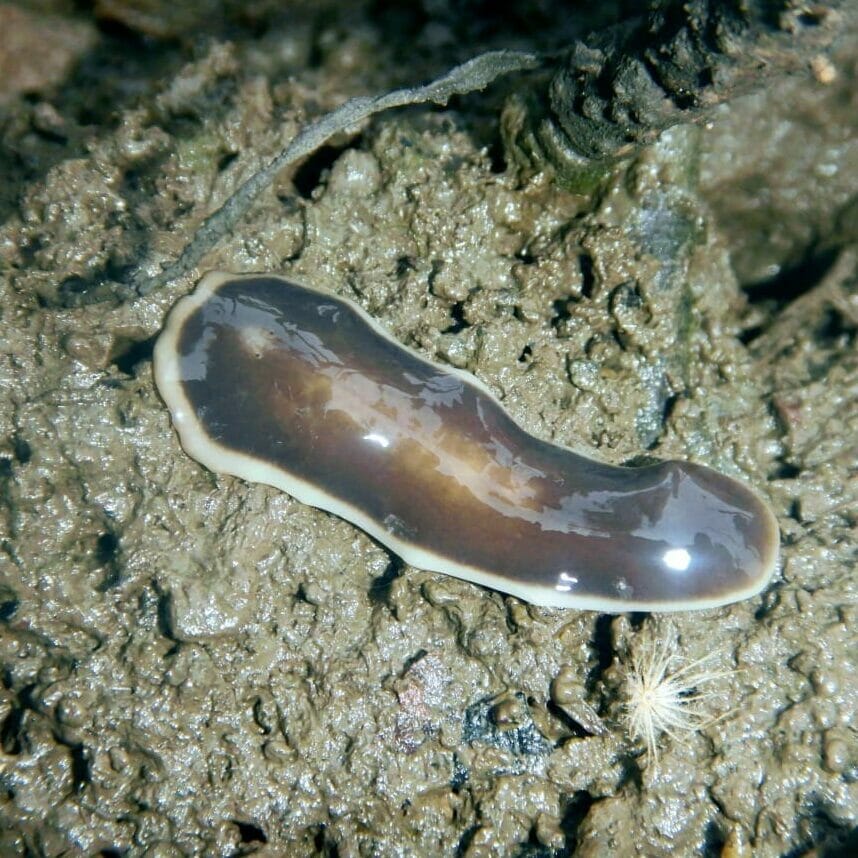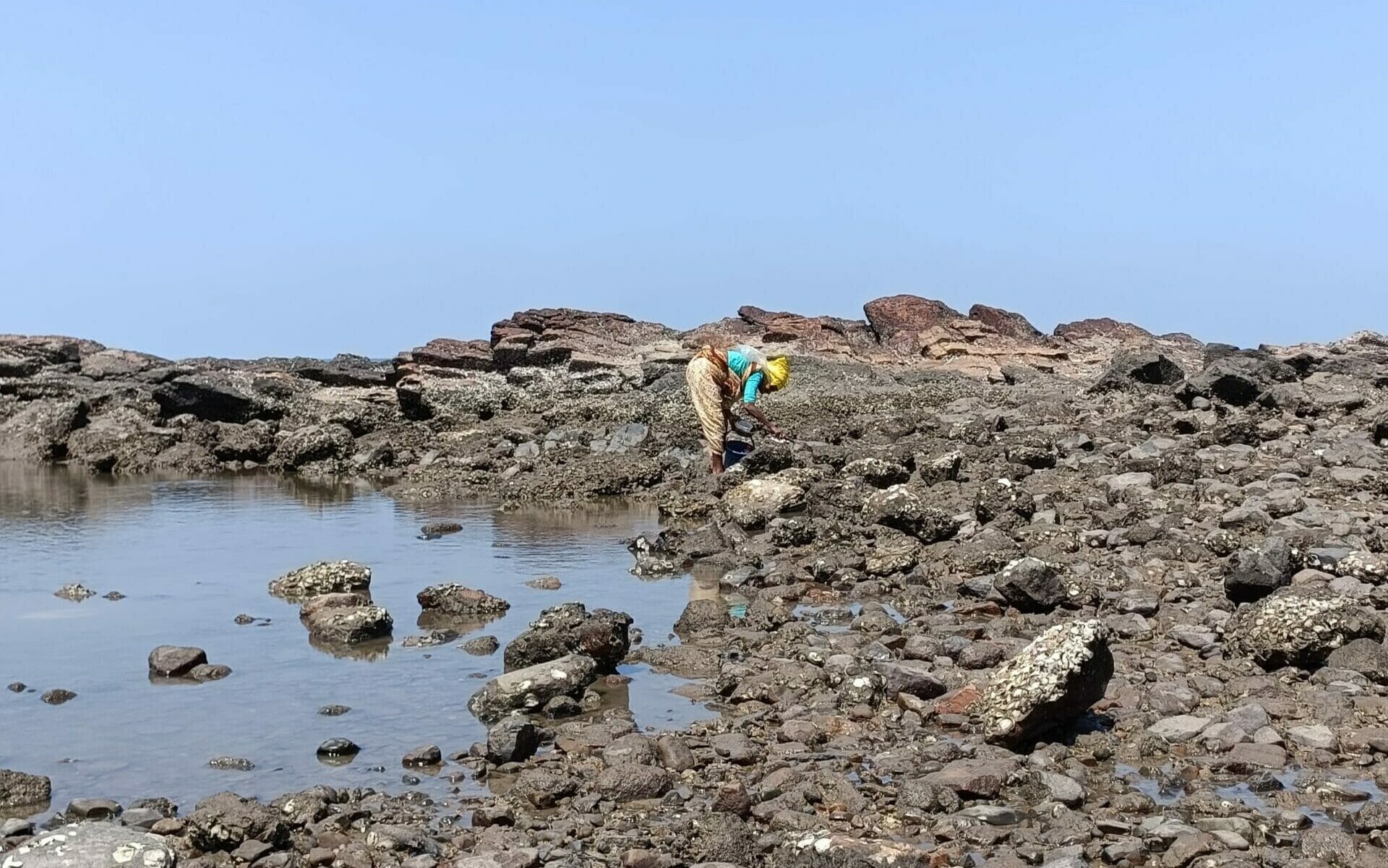Do you remember the last time you took a closer look at your neighbourhood? During the last weekend of April, I strolled through my neighbourhood in Mumbai, my eyes attuned to the subtlest motions of nature – a butterfly fluttering in the distance, and birds and bats foraging on love apples in a roadside tree.
A sea of golden-yellow copper pod blooms filled some roads while others, seemingly bare, had fig trees sprouting through concrete walls. I particularly made it a point to visit parts of Mumbai’s coastline, each of which was bustling with intertidal activity. As I peered eagerly among rocks laced with barnacles, oysters, and sea snails, I chanced upon a tidepool that was home to many tiny sea anemones (genus Anthopleura).
Mumbaikars contribute to citizen science
Mumbai’s citizen scientists bore witness to all of this and much more during the global City Nature Challenge 2023, which spanned from April 28th to May 1st. A little over 600 species of wildlife were observed in the Mumbai Metropolitan Region during this duration.
Citizen science or community science is a participatory form of science that engages members of the public in increasing scientific knowledge and is widely used in efforts to safeguard wild spaces in cities.
The City Nature Challenge is a way to get people living in towns and cities across the globe to document their local wildlife on their mobile phones and upload this information on iNaturalist—an open-source citizen science app. The app’s validated observations become ‘research grade,’ enabling scientists to use the data in their research.
Read More: Bloom-bay: Mumbai gets a splash of flowers in short-lived spring
Discovery of different flora and fauna
Nupur Sawant, a resident of Mulund West, took time out of her busy weekend to participate in the City Nature Challenge for the first time. She observed nature in her neighbourhood in Mulund and at the Bhandup Pumping Station, which is not only a sewage treatment plant but also one of Mumbai’s many bird watching haunts. Amidst the biodiverse mangroves and mudflats, Nupur documented birds such as white-eared bulbuls, juvenile flamingoes and whiskered terns.
Meanwhile, another first-timer Tabassum Musakunni looked for wildlife around Andheri East, Juhu, Sion and Byculla and observed 56 species—trees, squirrels and birds amongst these.
Gauri Joshi, a Vile Parle resident, played a crucial role in raising awareness about the City Nature Challenge in Mumbai. She is a lecturer at Ramniranjan Jhunjhunwala College and a Nature Interpreter at the NaturalisT Foundation, a Chinchpokli-based environmental conservation organisation. Over the weekend, Gauri coordinated a nature-watching activity at Deer Park in Powai, which was free to join.

Pradip Patade, of Mumbai-based Coastal Conservation Foundation, spent the weekend doing what he often does: observing marine life along Mumbai’s coastline. For him, this is a routine activity, and one that he spends several hours on each time.
However, he notes that this particular weekend was not ideal for observing intertidal life. “During the weekend we had mid tides on our shores, which means that very little area of the intertidal zone is exposed to air. It’s easier to explore the shore during low tide”.
An intertidal zone, one that falls between the high tide and low tide lines, becomes easy to access when not submerged in sea water and magnanimously reveals our ocean life like sea stars, sponges, hermit crabs and even corals.
Undeterred, Pradip instead explored the mangrove patches of Bandstand and the mudflats of Sewri. His exploration led him to documenting a mangrove flatworm, belonging to the genus Meixneria, a rare sighting. Pradip has identified this species to be Meixneria furva, but it needs to be verified by experts.
This documentation enriches the current scientific knowledge of this particular flatworm. Moreover, it helps spotlight the underappreciated invertebrates of Mumbai.

Human-nature relationships in the big city
This year’s edition of the City Nature Challenge helped me foster a deeper connection with my neighbourhood. I was able to document most of the trees lining a busy street near my home in Bandra, as well as observe some marine life a couple of kilometers away.
An observation that stayed with me was of an old woman crouched over Bandra’s rocky shore, carefully harvesting oysters. She too shares a deep connection with the ocean and its creatures, but for her, this bond is essential for her survival. Currently, the Mumbai Coastal Road Project threatens the way she and other artisanal fishers connect and care for the coast.

A report recently released by the Tata Institute of Social Sciences states that the Mumbai Coastal Road Project has caused a 50% decrease in the incomes and daily catch of fisherfolk. The study, which was commissioned by the Brihanmumbai Municipal Corporation, found that fishers who caught fish by hand, mostly women, were the worst affected by this large infrastructure project. Besides women, the project further impacts the livelihoods of other marginalised fishers including migrants and Muslims.
As residents of Mumbai, we may find it hard to reconnect with nature amidst unplanned development, which has led to the displacement of traditionally nature-dependent communities. However, citizen science offers us a means to seek out nature, observe and hopefully activate our citizenry to raise our voices against mindless development projects that threaten both nature and culture.